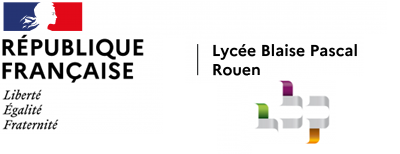Coca Cola vs. Pepsi
Act I : Syrups against stomach ache
The invention of the recipe of Coca-Cola is an essential part of the legend built around the brand for 120 years. In 1885, the pharmacist John Pemberton created in California a recipe to heal stomach ache. He sold his product on a small scale. In 1888, Asa Griggs Candler bought the brand and decided to make Coca Cola a real part in the drink business, because he was sure that Coke was special. That’s why he managed to make the sales take off through an intense marketing campaign and decided to sell his drink across the United States.
The birth of Pepsi in 1893 looked exactly like Coca-Cola. It started with the invention of a North Carolina pharmacist, Caleb Bradham. This drink was created to relieve stomach pain and restore energy. The case of pharmacy will take an industrial turn in 1902.
Act II : The Crisis
The crisis of 1929 surprised the two soda specialists in very different situations. Coca-Cola, which was taken in 1919 by a consortium of businessmen from Atlanta for $ 25 millions, dominated the market.
Contrary to Coca-Cola, Pepsi knew bad days… Its new owner, Charles G. Guth decided to sell the brand to Coca-Cola… In vain. In 1931, Pepsi was on the verge of bankruptcy for the second time in twelve years.
In desperation, Charles G. Guth tested a risky strategy : cutting prices. After buying a stock of recycled beer bottles, it offered 36 cl Pepsi at the same price as 18 cl of Coca-Cola. The brand was saved in 1936 and Pepsi made a profit of $ 2.1 million. Then $ 4.2 million in 1938.
Act III : The Internationalization
In the 30s, while his rival was recovering, Coca-Cola already extends internationally through the creation of The Coca-Cola Export Corporation (in 1930).
But it was World War 2 which made Coca-Cola known outside the borders of the US. And, thanks to a marketing stroke of genius : the company officials announced that they would provide all soda in the U.S. military, for only 5 cents a bottle. Coca-Cola conquers the world alongside GIs. As a bonus, the brand name became the most famous in the United States.
During that time, Pepsi Cola was back firmly on its domestic market, waiting for the end of the war to try to take its revenge. Its tactic : Forge close ties with the U.S. administration. Thus the brand wan exclusive access to the Soviet market in 1959, with the support of Nixon.
Act IV : The diversification
To win more than other, both brands were seeking to diversify. Coca-Cola bought the company fruit juice powder Minute Maid in 1960. For its part, Pepsi Cola was launching a "light" version in 1964 : Diet Pepsi, and in 1965 invented an energy drink for athletes : Gatorade. Pepsi also took advantage of the postwar boom to diversify into cereals, buying Quaker Oak in the 60s. and in the early 80’s, biscuits appetizer Frito-Lay.
For its part, Coca-Cola brand will decline until 1980, by copying Pepsi with Coca-Cola Light (1982), or Powerade (1988).
Today, the wallets of Coke and Pepsi products are substantially similar, the two giants who have been steadily copying each other. For Example : The 7up (Pepsi) and Sprite (Coca), Lipton and Nestea (a joint venture between Nestle and Coca), Vanilla Coke and Pepsi Vanilla. But each brand has its adherents.
But the leader remains the leader and the challenger, challenger. In 2006, Coca-Cola had a global market share of 53% in the segment of sodas.
Conclusion
In 2010, Pepsi has lost its second top-selling soft drink in the US. Indeed, the drink of Pepsi Company has been downgraded to a third position, and is now overtaken by the Coca-Cola and the Coca-Cola light... The drink lightened Coca-Cola Company, which was a derivative of the base product, finds itself behind the iconic red can, becoming one of its main competitors. (927 million cases of Coca-Cola Light were sold in 2010 United States, against 892 million for Pepsi-Cola. The Coca-Cola has remained on the way ahead, with 1.6 billion fund passed.)
